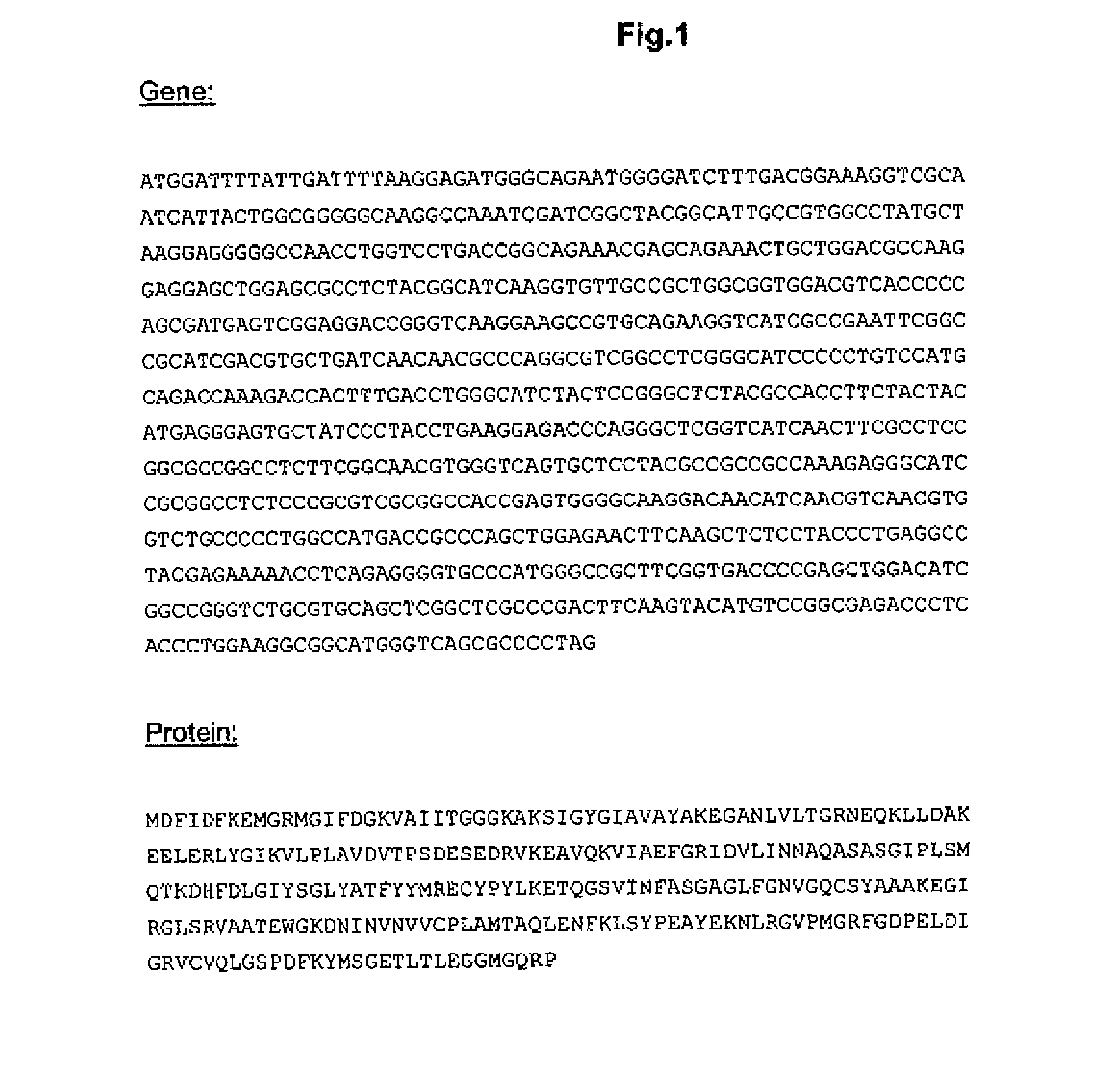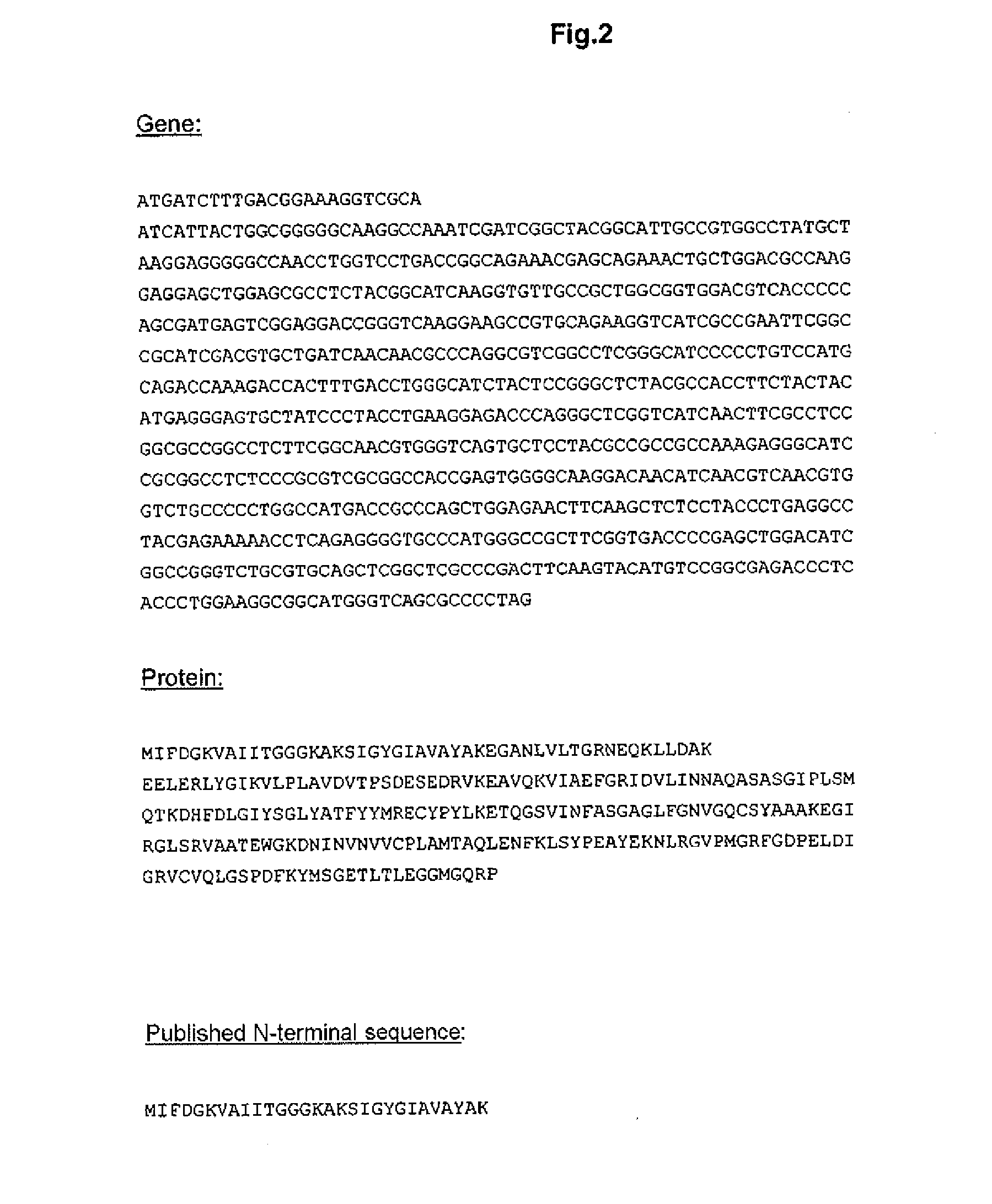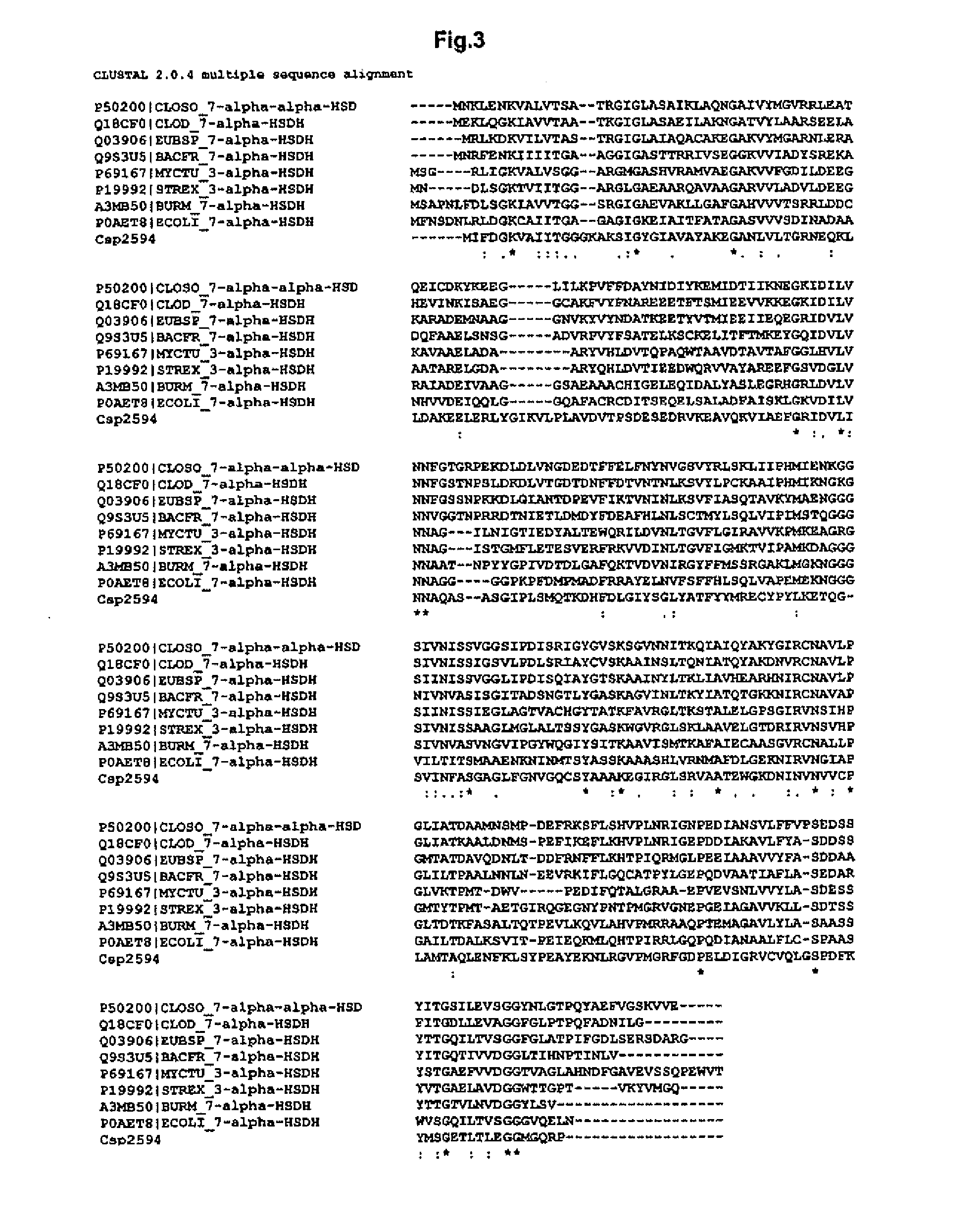Novel 12 alpha-hydroxysteroid dehydrogenases, production and use thereof
a technology of alpha-hydroxysteroid and dehydrogenase, which is applied in the direction of enzymes, biochemistry apparatus and processes, fermentation, etc., can solve the problems of difficult access to industrially utilizable amounts of enzymes, complicated and costly industrial production, and the problem of problematic use of 12-hsdh in the synthesis of pharmaceutical intermediates
- Summary
- Abstract
- Description
- Claims
- Application Information
AI Technical Summary
Benefits of technology
Problems solved by technology
Method used
Image
Examples
example 1
Sequence Homology Investigations
[0215]In order to obtain access to the 12α-HSDH sequence, the genome ofClostridium sp. group P strain 48-50 DSM 4029 was sequenced. The search both for the published N-terminal sequence and the search for the motif “LYNN” in all open reading frames (ORE's) did not lead to the sequence of the gene coding for 12α-HSDH.
[0216]It was possible only by sequence homology comparisons to identify a gene that contained the published partial sequence information in a modified form. The comparisons were carried out with TBLASTX (Tatusova and Madden (1999) FEMS Microbiol Lett 174 (2), 247-250) and under the following conditions:
Open gap: 5
Extension gap: 2
[0217]gap x_dropoff: 50
expect: 10.0
word size: 11
[0218]The standard conditions of http: / / www.ncbi.nlm.nih.gov / blast / Blast.cgi?PAGE=Translations&PROGRAM=tblastx&BLAST PROGRAMS=tblastx&PAGE TYPE-Blast Search&SHOW DEFAULTS=on#i were used; parameters are to be found there under “Algorithm parameters”.
[0219]In the gene f...
example 2
Amplification of the 12α-HSDH Gene and Expression of 12α-HSDH
1. Amplification
[0222]The following primers were used for this:
Forward long (long enzyme version,NdeI cleavage site):(SEQ ID NO: 14)GGTATTCCATATGGATTTTATTGATTTTAAGGAGATG.Forward short (short enzyme version,NdeI cleavage site):(SEQ ID NO: 15)GGTATTCCATATGATCTTTGACGGAAAGGTCGC.Primer reverse (BamH1 cleavage site)(SEQ ID NO: 16)CGGGATCCCTAGGGGCGCTGACCC.
[0223]The target gene was amplified by PCR using Pfu polymerase.
[0224]As a template, the genomic DNA of Clostridium sp. group P strain 48-50 DSM 4029 (29.4 ng / μl) was used, of which 1 μl was employed. For amplification, 1 μl of the Pfu polymerase was used. The buffer used was Pfu buffer (10× with MgSO4) (Fermentas, St. Leon-Rot). In each case 1.5 μl of forward and reverse primer (10 μM) were employed, and 2 μl of deoxynucleotide triphosphate (20 μM). The batch was adjusted to 50 μl with RNase-free water. The reaction was carried out in the Eppendorf thermocycler. The PCR batch w...
example 3
Preparative Synthesis of 12-Ketochenodeoxy-Cholic Acid from Cholic Acid
[0233]The expressed enzyme (short version) was employed in combination with ADH t (Codexis, Jülich) for the preparative synthesis of 12-ketochenodeoxycholic acid. For this, 500 ml of cholic acid (400 mM in potassium phosphate buffer (50 mM, pH 8.0), 10% acetone), 0.25 mM NADP+, 2000 U of 12α-HSDH_short from E. coli BL21 (DE 3) (cf. above Example 2) and, for cofactor regeneration, 550 U of ADH t (from Thermoanaerobacter sp., Codexis, Jülich were mixed in a 1 l round-bottomed flask. The reaction was carried out at RT, with continuous stirring and reflux cooling. After 27 h, a further 550 U of 12α-HSDH and 138 U of ADH t were added and the mixture was incubated for a total of 117 h. During the reaction, the photometric absorption was determined at 340 nm and 1 ml samples were removed for monitoring the course of the reaction, which were stopped with 100 μl of hydrochloric acid (1 M) and evaporated or extracted in et...
PUM
| Property | Measurement | Unit |
|---|---|---|
| temperature | aaaaa | aaaaa |
| temperature | aaaaa | aaaaa |
| temperature | aaaaa | aaaaa |
Abstract
Description
Claims
Application Information
 Login to View More
Login to View More - R&D
- Intellectual Property
- Life Sciences
- Materials
- Tech Scout
- Unparalleled Data Quality
- Higher Quality Content
- 60% Fewer Hallucinations
Browse by: Latest US Patents, China's latest patents, Technical Efficacy Thesaurus, Application Domain, Technology Topic, Popular Technical Reports.
© 2025 PatSnap. All rights reserved.Legal|Privacy policy|Modern Slavery Act Transparency Statement|Sitemap|About US| Contact US: help@patsnap.com



